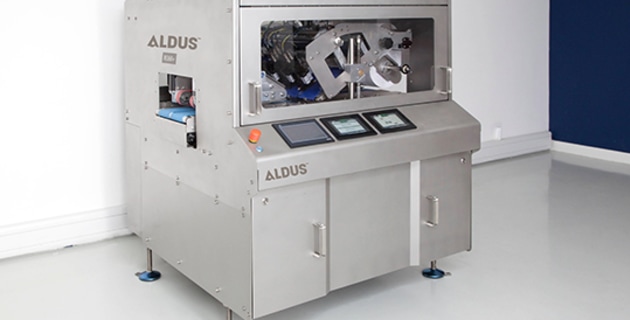 Read more
Read more
Aldus Tronics is set to launch the M360+ linerless labeller in 2026 across ANZ and the US, following its acquisition of IP from JBT Marel to develop a packaging machine purpose-built for linerless labels. Read more
Herma, locally represented by Result Group, has released its new 62E adhesive, which the company said is not only ideal for composting, but also especially insusceptible to migration.
Supply chain management is going through unprecedented change, and presenting many challenges for manufacturers. The answer to all of these challenges? Traceability, says Markem Imaje's Tessa Eastman.
In addition to its groundbreaking concept of Full Wrap, Multivac Marking & Inspection now offers two more high-quality and sustainable labelling solutions for fresh produce trays – Top Wrap and Top Close.
To achieve the best possible marriage between form and function, Herma, locally represented by Result Group, has adopted a new clean design for its latest range of labelling machines.
Reid Fruits has seen a dramatic decline in product counterfeiting over the past three export seasons to Asia, as a result of a Smart Fingerprint solution developed by Laava, in collaboration with Peacock Bros.
Multivac Marking & Inspection, which is firmly rooted in the eastern part of Westphalia, Germany, celebrates 50 years of delivering high-quality solutions for labelling, marking and inspection.
In a feisty discussion about traceability and the future supply chain at the AUSPACK Leaders' Forum, PKN publisher Lindy Hughson chaired a panel of industry specialists willing to share their insights and opinions.
Herma, represented by Result Group, is now offering an adhesive material for thermal printer labels that is fully approved for food contact, which the company believes is the first of its kind worldwide.
Intelligent labels embedded with a RFID inlay are not only of benefit to apparel retailers, they have also expanded to other sectors, creating opportunities for label converters. Avery Dennison tells us more.
War in the Ukraine, the growing shipping crisis, and the lingering impact of Covid, have conspired to force the organisers of Labelexpo, due to run next month in Brussels, to reschedule the event to next year.
The Herma 500 label applicator, available in Australia through Result Group, can now easily add new functions or higher speeds via code-enabled upgrades.
Xeikon is launching its LCU series (Label Converting Unit) series, specifically developed and designed for the converting industries in high-end label production and manufacturing.
The Screen Truepress Jet L350UV SAI S has secured its third EDP (European Digital Press Association) win for its inkjet label press technology, taking out the 2021 Best Label Printer Award.
UPM Raflatac's progress towards a more circular economy for plastics and a future beyond fossil fuels, has been detailed in a new report, compiled by Ellen MacArthur Foundation and the UNEP.
Macsa ID SA, represented in Australia by Result Group, has announced the expansion of its iCON laser range to incorporate the entry-level iCON 3 small character coding laser.
With its L 310 full wrap labeller, Multivac is redefining the packaging of fresh eggs in boxes or plastic trays, promising to deliver highly attractive packs that also close with a secure seal.